The divine feminine can be defined in countless ever-shifting ways, and ancient cultures certainly knew that; that’s why we see so many various symbols of femininity across time and space. The underlying, not-quite-explainable energy of the divine feminine, however, hasn’t changed through the millennia. Luckily, we still have ancient symbols with us today with which we can learn from. These feminine symbols of strength can offer so much more than you’re probably aware of; let’s dive in!

Importance of sacred feminine symbols
Living in a harshly patriarchal world can feel crushing for all people (not just those who identify as female). Patriarchy expects us to rush, to constantly achieve, to have all of the answers, to never rest or slow down; in other words, it devalues the feminine qualities of flow, nurture, restoration, and compassion.
All this is to say that, if you’re feeling tired, under-nurtured, under-empathetic, or even stuck, you could use a boost to your inner feminine! So you can bring your masculine and feminine energies into a balance. So many beautiful ancient cultures, from the Celts to the Hindus to the Pagans, have much to teach about the divine feminine, and you can study their iconic feminine symbols to achieve this.
Seeing or meditating on the following symbols daily can leave a deep psychological impression, as long as you’re aware of the symbol’s original meaning. They can help you in your practice to surrender to flow, build compassion, and empower yourself with self-love.
27 Feminine Symbols of Strength
1. Unalome

You’ll likely see the Unalome on dainty tattoos, or perhaps hanging as art in yoga studios. This Buddhist symbol, consisting of spiraling and interweaving lines, is meant to suggest one’s journey to enlightenment. Often, patriarchy teaches us that our journey must progress in a straight line, always improving, never faltering; the Unalome exemplifies femininity by teaching us that our journeys are more of an ebb and flow.
2. Triple Goddess or Triquetra

If you’ve studied Paganism, or any kind of witchy spirituality involving goddesses or moon phases, you’ve surely come across the triquetra. It looks like the waning, full, and waxing moons put together, and it represents what Wiccans and Pagans call the “triple goddess”: maiden, mother, and crone. These are the three phases of a woman’s life: carefree maidenhood, the mothering years, and wise cronehood.
3. Lotus

Iconic to Buddhist culture, the lotus can also symbolize aspects of the divine feminine. It’s a symbol of clarity, purity, and perfection. In addition, lotus flowers are known to grow beautifully from murky, muddy depths; this can serve as a metaphor to the way a woman can birth new life from the darkness of her womb.
4. Swan
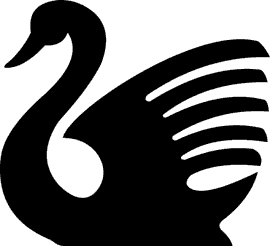
Most will recognize the swan as a universal symbol of beauty and grace. The gorgeous bird glides across the water’s surface with (seemingly) no effort at all. This can be said to symbolize the way that aligning with the feminine essence of flow (as opposed to striving, pushing, and forcing) can allow our deepest needs to fall into place without harsh effort.
5. Venus Symbol
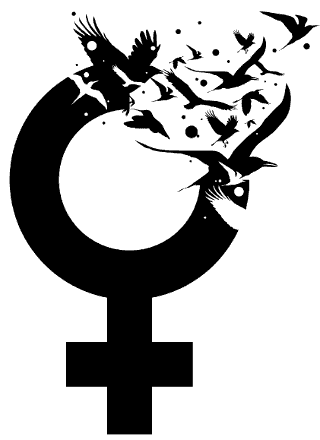
You’ll recognize the Venus symbol both as the universal symbol for “female”, and (for astrologers) the symbol for the planet Venus. In this commonplace symbol, the circle represents the womb, while the cross underneath it was added to make the symbol look like the goddess Venus’s hand mirror. As a whole, this symbol is aligned with the goddess Venus and her feminine attributes of passion and love.
6. Gaia (Goddess of Earth)

Those who know goddesses will recognize Gaia as “the great mother”. She is said to be the first Greek deity, born from chaos; the Greeks hail Gaia as the creator of our Earth. When you connect with Earth, you connect with both Gaia and with your feminine instinct to nurture all living beings.
7. Triskelion

Also known as the “triple spiral” or the “triskele”, there’s not quite a consensus on what this Celtic symbol means– however, many believe that the triskelion may symbolize cyclical flow. Anything that symbolizes flow is certainly associated with the feminine! Also, the symbol’s triplicate nature has no consensus on its meaning, but it may symbolize life, death, and rebirth: yet another aspect of feminine nature.
8. Celtic Motherhood Knot

This traditional Celtic symbol looks like two interwoven hearts; it’s said to symbolize the never-ending bond which begins during a child’s gestation and lasts eternally, long after both mother and child have left this life. It symbolizes strength, selflessness, eternal love and wisdom.
9. Goddess Durga

When you think of the “fierce mama bear” energy, think of Durga – she’s the eight-armed Hindu goddess of protection. Those who work with goddess archetypes often call on Durga in a situation which requires fierce boundaries. As such, Durga is associated with the strength which feminine love can embody.
Another powerful symbol associated with Goddess Durga is Durga’s trident that represents power and protection and Durga riding a tiger that symbolizes ultimate power and positive energy.
10. Inverted Triangle

In traditional alchemy, the upside-down triangle is the universal symbol for the water element– which is also the element most closely associated with femininity. Both water and femininity possess essential elements of flow, depths, and emotions. Indeed, femininity exemplifies the way that “there is nothing stronger than gentleness”, just like the way that soft, malleable water can cut through hard stone after several years’ time.
11. Inguz Rune

Shaped like a diamond, the Inguz Rune may be a traditionally masculine symbol, but it carries aspects of femininity as well. Most notably: the concepts of birth and fertility. This rune also symbolizes movement (i.e., flow!), and sacrifice. Not boundaryless sacrifice, of course, but think of this instead: the sacrifices a woman must make to give birth, such as the pains of childbirth and stressors of motherhood.
12. Berkano Rune

“Berkano” literally translates to “birch goddess”. Little known fact: birch trees are one of the first plants to begin regeneration in the spring. Therefore, the Berkano Rune symbolizes renewal and regeneration, as well as birth and growth– all of which are divine aspects of femininity.
13. Spiral Goddess
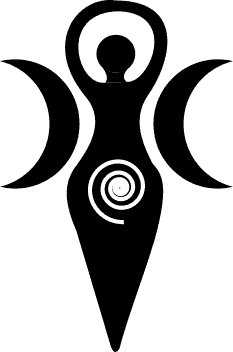
Have you ever seen a symbol (perhaps on jewelry) that looked like a goddess figure with a spiral in her belly? The “spiral goddess” wears a spinning symbol right on her sacral chakra (also the womb area). As such, the spiral goddess represents the creative, fertile nature of the sacral/womb chakra.
14. Moon

You’d be remiss to consider divine feminine symbols without thinking of the moon! Due to its month-long cycle through its phases, our moon has been known to represent femininity for millennia. Its ever-shifting nature symbolizes the divine ebb and flow of womanhood, and the way that we, as women, cycle through periods of bright extroversion and introspective introversion each month.
15. Rose of Venus

Astrologically, the planet Venus holds feminine energy, bringing with her a heart-centered energy of unity. What’s fascinating about Venus, though, is that over the course of about eight years, it appears to move in a “rose-like” pattern across Earth’s night sky. It’d take me about three whole pages to fully explain the Rose of Venus, but suffice it to say: this beautiful eight-year cycle is all about moving in and out of feminine phases of self-love, introspection, and relationships.
16. The Star of Lada

When you think of goddesses of love, you might think of the iconic Aphrodite, or even the Norse goddess Freya. Slavic culture had their own goddess of love, too: her name was Lada. She carried her own symbol, called the Star of Lada, which is said to protect against negativity and darkness.
17. Athena
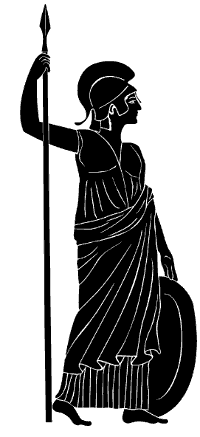
As a Greek goddess of both war and wisdom, Athena serves as a poignant feminine symbol in today’s patriarchal society. For example: she stopped Hercules from killing his children by throwing a stone and knocking him unconscious. This archetype refutes the patriarchal notion that only men are calm and wise, whilst women are “overly emotional”!
18. Tree of Life

Tree of Life is an ancient symbol that represents the divine masculine as well as the divine feminine and how both these energies come together to create the cycle of life. The tree of life symbolizes strength, oneness, connection, self growth, prosperity, family, groundedness, humility, wisdom, individuality and the cycle of life.
19. Star of Lakshmi

Lakshmi is a prominent Hindu Goddess associated with Wealth, Power and Feminine Energy. The Star of Lakshmi is made using two concentric squares and has eight sides which represent the eight forms/manifestations of Goddess Lakshmi or in other words, eight forms of wealth available to humans on earth. These eight forms of wealth are as follows:
- Adi-Lakshmi – Goddess of new beginnings.
- Dhairya-Lakshmi – Goddess of courage.
- Dhaniya-Lakshmi – Goddess of food and nourishment.
- Gaja-Lakshmi – Goddess of force and influence.
- Santana-Lakshmi – Goddess of fertility and familial wellbeing.
- Vijaya-Lakshmi – Goddess of victory and achievements.
- Vidya-Lakshmi – Goddess of knowledge and wisdom.
- Dhana-Lakshmi – Goddess of material wealth.
All of these aspects makes the Star of Lakshmi a powerful symbol of femininity.
20. Bamboo tree

The bamboo tree is a symbol of strength, flexibility and health. The Bamboo is a neutral tree that is not directly associated with femininity or masculinity but can be used to represent both.
21. Tri-Shakti

Tri-Shakti (translated as Three Powers in Sanskrit) is a powerful symbol in Hinduism that represents the three Hindu Goddesses – Durga(Goddess of Power also known as Parvati or Shakti) , Saraswati (Goddess of Knowledge) and Lakshmi (Goddess of Wealth).
This symbol is a combination of three auspicious symbols that include the Trishul, OM and Swastika. The Trishul (Trident) represents power/protection, OM represents positive vibrations & knowledge and Swastika represents well-being & wealth.
The lemon on top of the trident represents good luck & protection.
22. Oysters
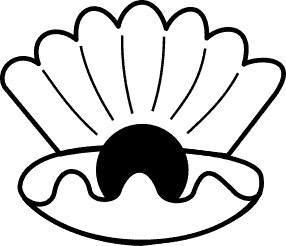
Oysters symbolize, protection, strength, fertility, femininity and prosperity. An Oyster serves as a constant reminder that the obstacles you face today are only temporary and will always lead to something phenomenally beautiful.
23. Phoenix Rising
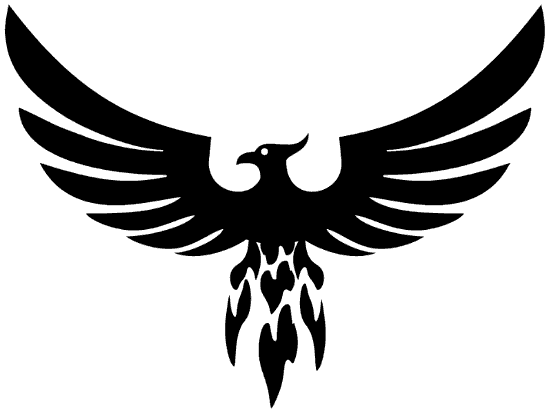
The Phoenix (meaning firebird in Greek) is a mythical bird that symbolizes rebirth, healing, renewal, good luck, determination, resilience and eternal life. The Phoenix also symbolizes letting go of old beliefs and constantly growing/evolving to reach your greatest potential.
24. Lioness

Nothing symbolizes feminine strength and power more than a Lioness. A Lioness also symbolizes unity, divine sisterhood (women standing up for women), protection, agility and divine feminine energy.
25. Fern

The Fern has been used throughout history in many different cultures as a symbol of strength, perseverance, resilience, liberty, confidence, eternal youth and magic.
26. Asase Ye Duru

Asase Ye Duru (which translates to – The Earth Has Weight) is an African (Adinkra) symbol that symbolizes the Divinity of Mother Earth. It is a symbol of providence, feminine energy, power, protection, providence, sustenance and divinity.
27. Sea Shells
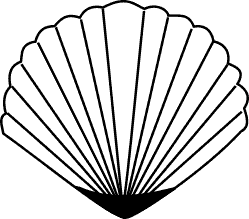
Since ancient times, seashells have been associated with the divine feminine. Seashells symbolize protection, beauty, immortality, self reliance, freedom, abundance and feminine energy.
How to use these symbols for strength?
1. Wear them as jewelry or place them in your house
If a particular symbol inspired you, it’s likely that you can find that symbol on a piece of jewelry or art! For example: if you need help setting boundaries, you might look for a Durga statuette for your living room. Seeing the symbol every day can program its meaning into your subconscious.
2. Meditate on their meaning
Additionally, you might want to sit with the meaning of one of these symbols on a regular basis. You don’t have to necessarily look at the symbol the entire meditation, just simply contemplate the symbol’s meaning as you feel its energy leaving an impression on your psyche.
3. Look at them when your subconscious is in an open state
Look at these symbols when your subconscious is in an open/receptive state. This would be a few minutes before going to bed and a few minutes after waking up in the morning. You can also look at them when you are feeling emotional as that is also when your subconscious becomes open. Make sure that you associate a positive meaning with the symbol(s) of your choice and charge it with your intention.
Conclusion
Whether you want to slow your pace, learn to be more empathetic, or lean into vulnerability, the divine feminine– and symbols of feminine strength– can help. Wear these symbols, think about them, meditate on them, draw them– any of these simple actions can help you exit a patriarchal state of mind and ease into your femininity!







